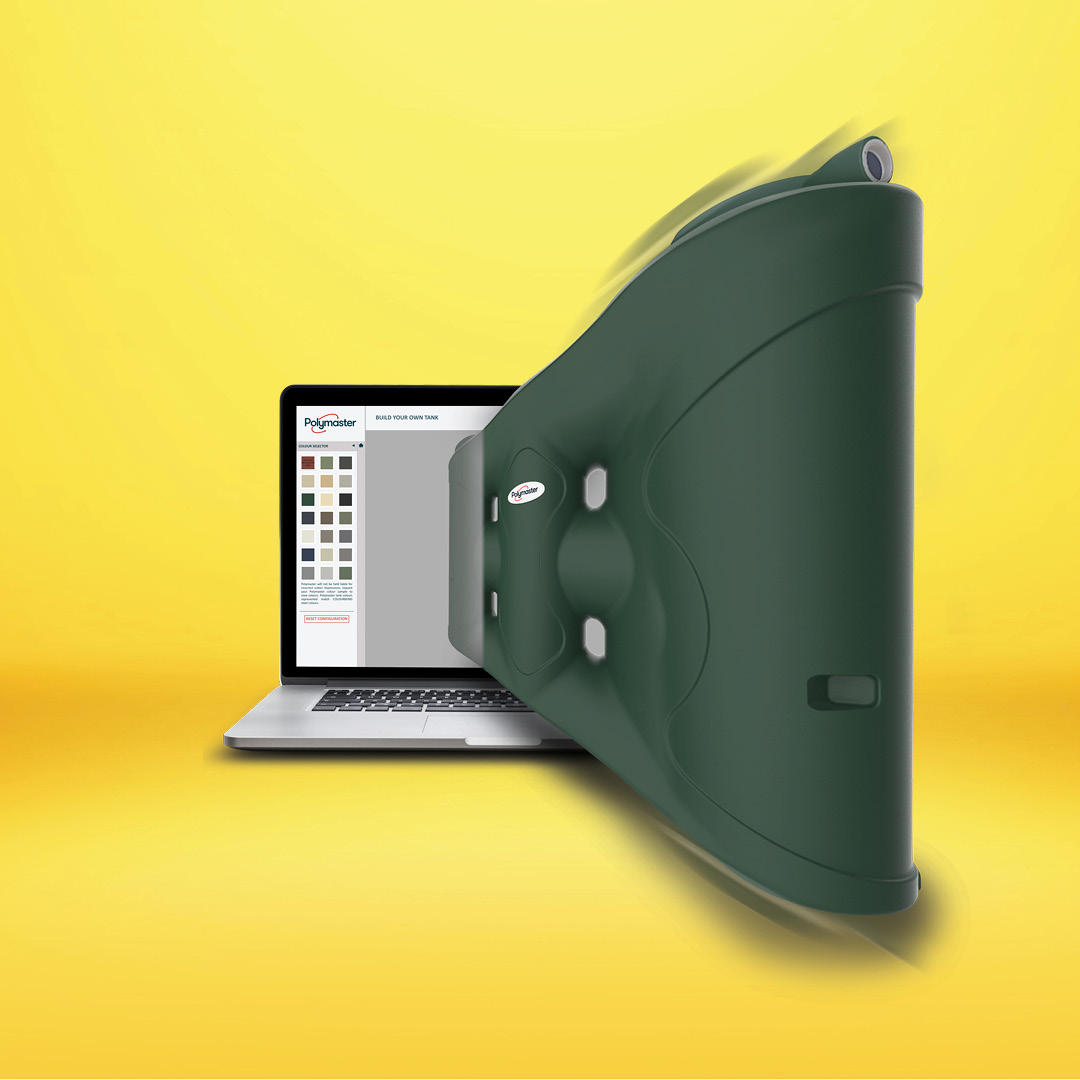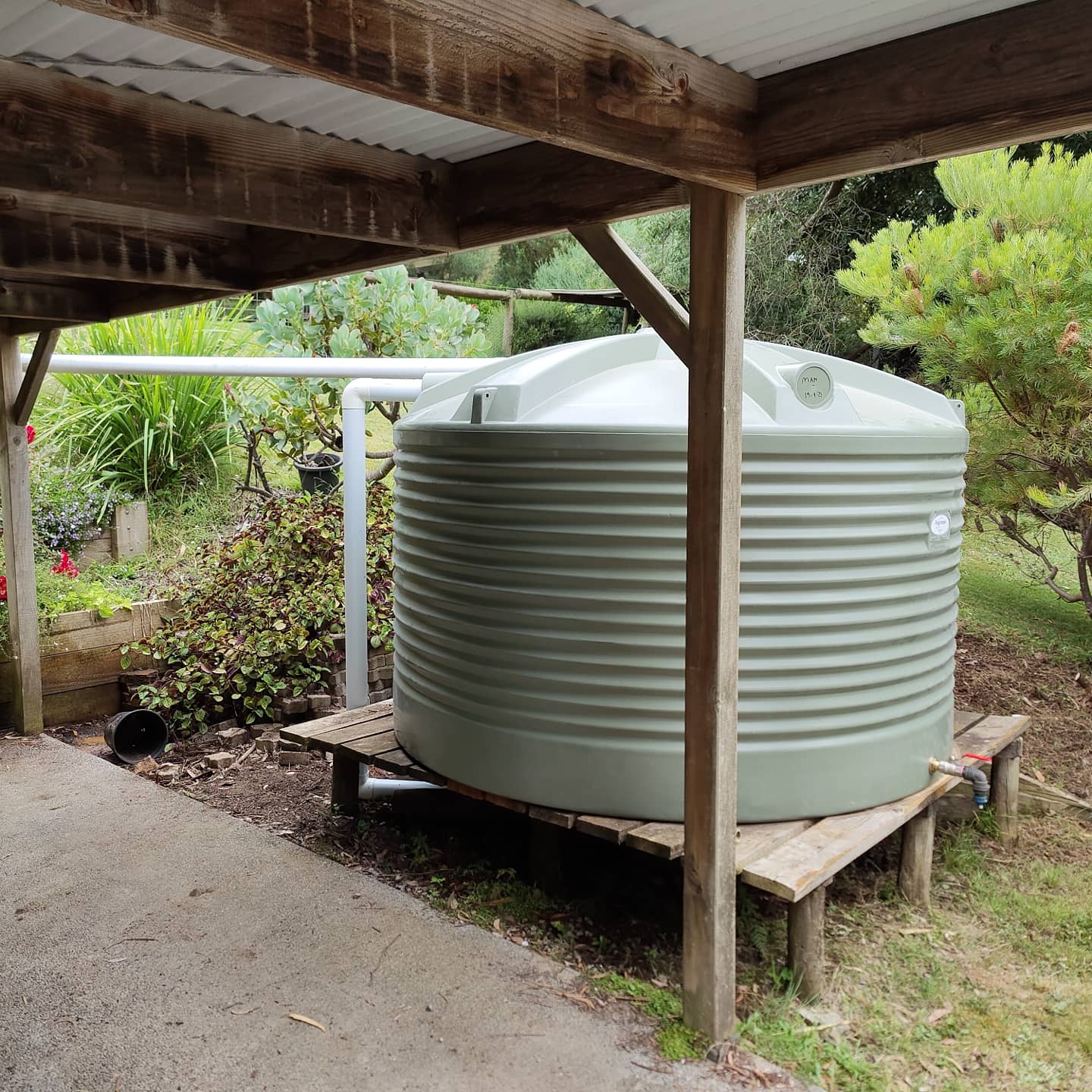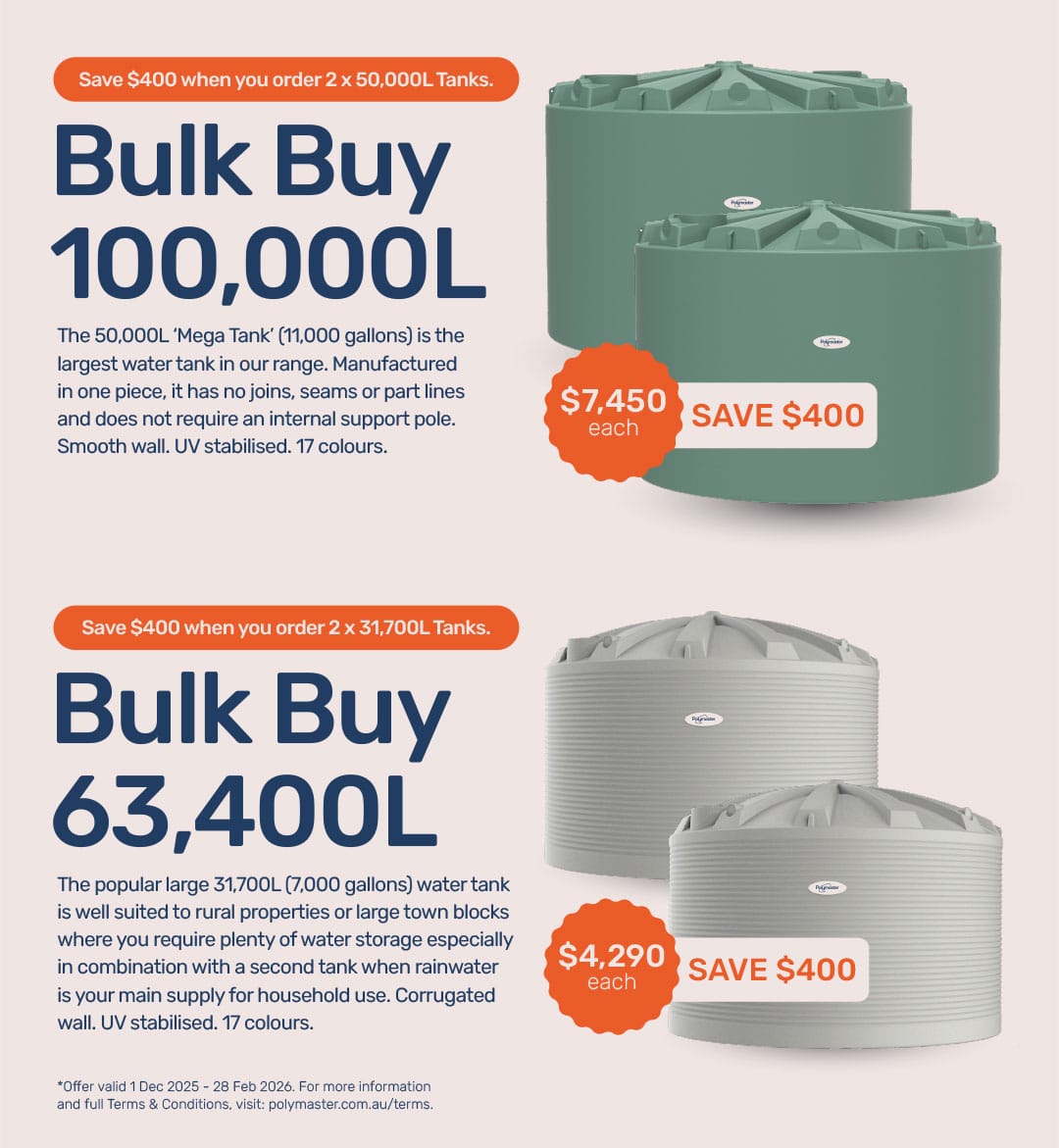To estimate your rainwater tank needs, start by gauging how much water your roof can realistically capture using your local average rainfall (account for gutter/runoff losses), then assess your household demand based on the number of people, usage habits, and what you’ll use the water for (e.g. whole-of-home vs garden/stock). Compare the likely collection to your estimated demand over a typical dry spell and choose the smallest tank that reliably covers that gap within your available space.
Why is Estimating Rainwater Needs Important?
- Every household and property uses water differently. Accurately calculating your rainwater demand helps you:
- Avoid shortages during high-use periods or dry seasons.
- Prevent overinvestment in tanks that exceed your actual storage needs.
- Maximise water savings by matching tank capacity with available roof catchment and rainfall.
Choosing the correct rainwater tank capacity ensures you make full use of your rainfall collection without running dry too soon or leaving unused capacity year after year. With Polymaster’s rainwater tank size guide and online water tank calculator, estimating your needs is simple and accurate.
Factors That Affect Your Water Requirements
Several factors determine how much rainwater you’ll need to store. Understanding these can help you use Polymaster’s rainwater calculator more effectively when estimating your rainwater tank capacity in Australia.
Household Size and Usage Habits
In Australia, the average person uses between 150–200 litres of water per day, depending on location and lifestyle. A family of four may use around 600–800 litres daily for showers, laundry, dishwashing, toilets, and gardens.
To estimate your water tank size, multiply your daily consumption by the number of days you want to cover: 600 L/day × 30 days = 18,000 litres needed for one month of supply.
If you’re only using tank water for specific tasks like garden watering or toilet flushing, a smaller 5,000–10,000 litre water tank may be enough. For a complete household supply, larger options such as 20,000 litres or more are ideal.
Understanding household water usage in Australia is key to finding the best tank size for your home.
Climate and Rainfall in Your Region
Your local rainfall has a major impact on how much water you can collect and how much you’ll need to store.
- Wetter regions, such as coastal New South Wales or southern Victoria, can rely on smaller tanks because rain falls more often.
- Drier inland areas or farming regions benefit from larger tanks, 20,000 L or above, to store enough water between rain events.
Use an Australian water tank calculator like Polymaster’s to input your postcode and rainfall data for a realistic estimate. Even in high-rainfall areas, it’s worth considering seasonal variation, as long dry spells can quickly drain small tanks.
Property Space and Tank Placement
The available space on your property influences which type of rainwater tank suits you best.
- Slimline water tanks are perfect for narrow side yards or urban blocks, providing practical slimline water tank sizes without sacrificing capacity.
- Round water tanks are cost-effective and ideal for open areas with plenty of space.
- Underground water tanks are an excellent choice for smaller properties or where aesthetics are a priority.
Before installation, check council requirements, access for delivery, and where overflow and pumps will be located. Proper placement ensures your tank performs efficiently and safely.
How to Use the Polymaster Rainwater Calculator
Polymaster’s water tank calculator is a simple and effective rainwater harvesting calculator that helps you determine exactly how much water storage you need.
- Enter your roof area (in square metres): This determines how much rain can be captured.
- Input your average annual rainfall (in millimetres): You can find this information via the link provided in the calculator.
- View your estimated rainwater harvest: The calculator automatically shows how many litres of rainwater your roof can collect.
- Review your tank recommendation: It assumes the tank can fill around three times per year (depending on rainfall and usage patterns) and provides a minimum tank size suited to your property.
This rainwater tank sizing tool eliminates the guesswork from rainwater harvesting and helps ensure you select a water tank capacity that meets your usage needs without waste or shortfall. Accurate planning also supports sustainability and long-term savings.
Choosing the Right Water Tank for Your Needs
Once you know your estimated requirements, explore Polymaster’s range of rainwater tanks Australia trusts for quality and durability:
- Slimline water tanks: Ideal for smaller properties or those needing a compact garden water tank size.
- Round water tanks: Great for water tanks for households, farms, and businesses that need large volumes.
- Underground water tanks: Discreet and space-efficient for urban settings.
Each Polymaster rainwater tank is made from UV-stabilised, food-grade polyethylene, designed for Australian conditions and certified to AS/NZS standards. Whether you’re calculating farm rainwater usage, choosing a residential water tank, or estimating your garden water needs, Polymaster offers reliable solutions to match every property type.
Final Thoughts
Knowing how to estimate water tank size allows you to plan confidently and use every drop efficiently. By combining your daily water use, rainfall data, and available property space, you can choose the right rainwater tank capacity for your household or business.
Polymaster’s rainwater tank calculator and range of Australian-made water tanks make it easy to find the perfect system for your needs. Start estimating today and explore Polymaster’s durable, high-quality rainwater tanks — built to deliver sustainable water storage for years to come.
Enquire
More Similar News
View all News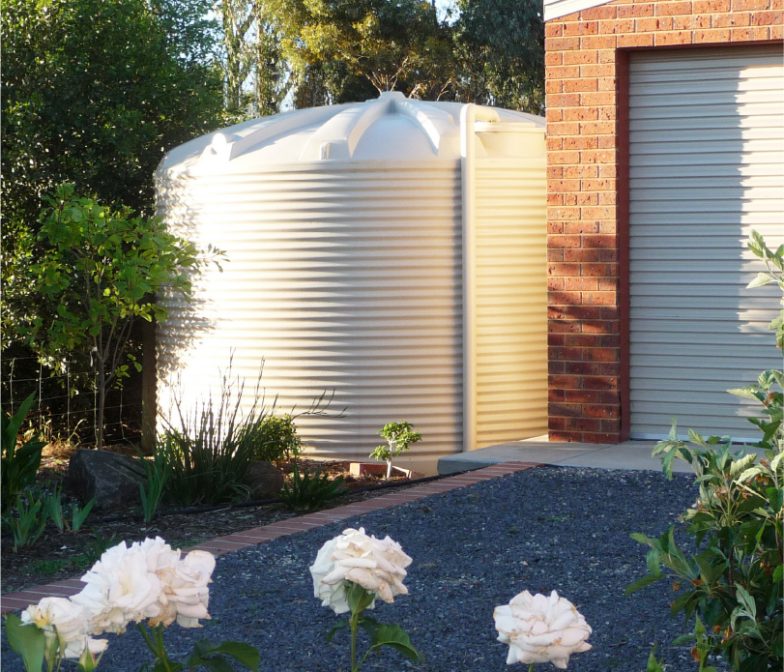
What Is the Best Base for a Water Tank?
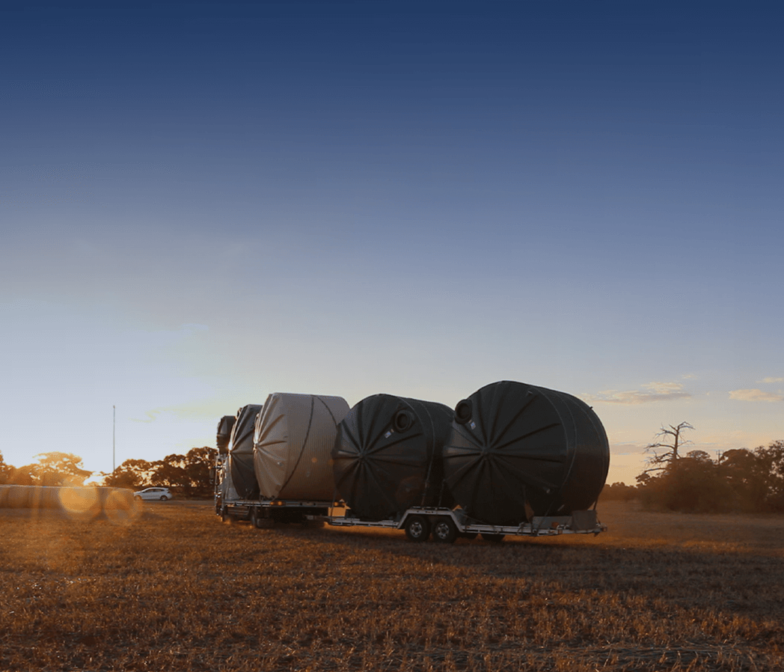
What Are the Benefits of a Water Tank?
